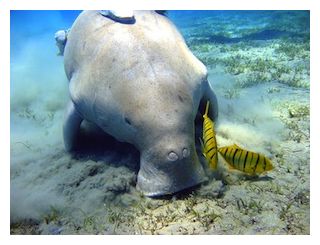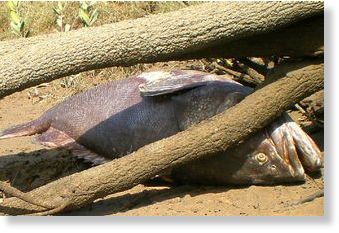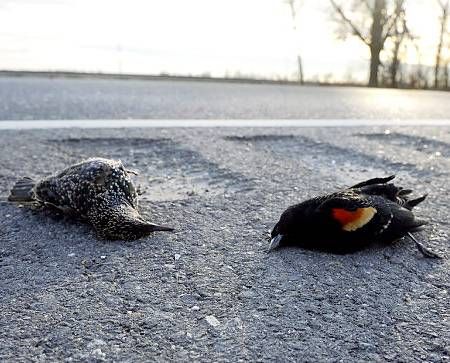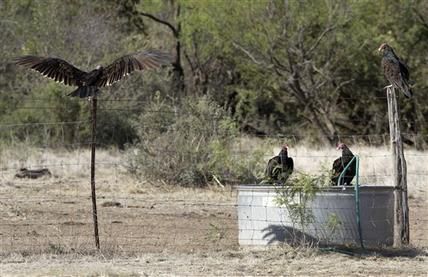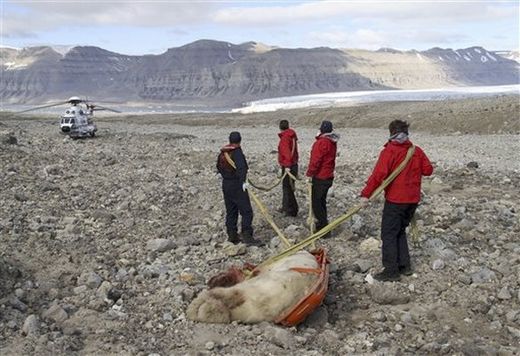
© AP Photo / Arild Lyssand / District governor of Spitsbergens office / via Scanpix) NORWAY OUT This image released by the District Governor of Spitsbergen's office shows the dead male polar bear which had attacked youths who were camping on a remote Arctic glacier as part of a high-end adventure holiday at Spitsbergen, Svalbard archipelago, in Norway, Friday, Aug. 5, 2011 . The polar bear was shot and killed by other members of the group. The attack took place on the Svalbard archipelago, which is home to about 2,400 people and 3,000 polar bears and one British youth was killed in the attack.
The polar bear that killed a British teenager and mauled four others was starving and significantly underweight, Norwegian officials said Sunday.
The results of the examination of the 550 pound adult male came as survivors of the attack were being airlifted back to Britain.
Scott Bennell-Smith, 17, from Cornwall, and Patrick Flinders, 16, from Jersey, were taken by air ambulance to hospitals in England. The team leaders, Michael "Spike" Reid, 29, and Andy Ruck, 27, who were both mauled as they tried to assist the boys, are due to be transferred Monday,
The London Times reported.
All are said to be in a stable condition.
Reid was seriously injured around the face and neck, before he finally managed to fire the single shot that killed the animal.
His courage has been praised by other members of the 13-strong team, who had been camping out on the Von Postbreen glacier on the Norwegian island of Svalbard, when the polar bear attacked.
However, he could not save Horatio Chapple, 17, an Etonian from Salisbury, Wilsthire, who died at the scene. An autopsy will be carried out in Norway Monday.
Liv Asta Odegaard, spokeswoman for the governor of Svalbard, said that
an examination of the bear's carcass showed it had not eaten for some time."It had a very thin fat layer and little content in its stomach," she told
The Times.

